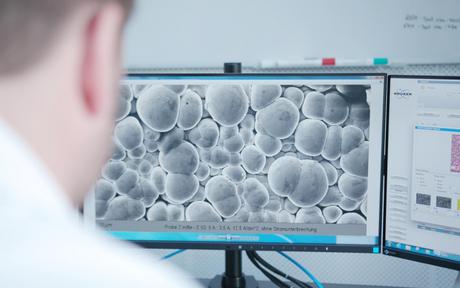Analytical methods
Instrumental analysis for timely and solution-oriented service is one of our core competencies.

In addition to routine analysis, we can react quickly to challenging tasks at the customer's site, which naturally have the highest priority for us. The experience with a wide variety of matrices combined with the existing analysis capabilities mean that even complex tasks can be handled as quickly as possible.
The electrolytes of our customers are analyzed with the following analysis devices:
Elemental analysis
- ICP-OES (Inductively Coupled Plasma - Optical Emission Spectrometry)
- AAS Atomic Absorption Spectrometry
Determination of anions in electrolytes
- Ion chromatography (IC)
Analysis of organic components, e.g. brighteners
- HPLC (high performance liquid chromatography) studies with multiple instruments
- UV/VIS spectroscopy
- Infrared spectrometry
- Carrying out titrimetric determinations using automatic titrators
- Cyclovoltammetry
Determination of physical quantities
- Dry residue
- Ash residue
- Surface tension measurement (static and dynamic)
- Density determination
- Measurement of refractive indices
- Hardness test HV
- Rest potential measurements of multilayer systems (STEP test)
- Roughness measurements
Surface assessment
- Preparation of cross sections for layer thickness measurement and assessment of the surface condition
- Microscopic examinations using reflected light and stereo microscopes
- Scanning electron microscope (SEM) and energy dispersive X-ray spectroscopy (EDX) to investigate surface structure and elemental composition
- L*a*b color measurement
- Layer thickness measurement by means of X-ray fluorescence
- Coating thickness measurement using the magnetic inductive method and the eddy current method
- Friction coefficient test rig for measuring the friction coefficient, e.g. of surfaces with organic sealant
Corrosion tests
- Salt spray test according to DIN EN ISO 9227
- Condensation alternating climate
Testing of painted and powder-coated surfaces
- Adhesion test
- Cupping test (DIN ISO 1520)
- Mandrel bending test (DIN EN ISO 1519)
- Ball impact test
- Cross-cut test
